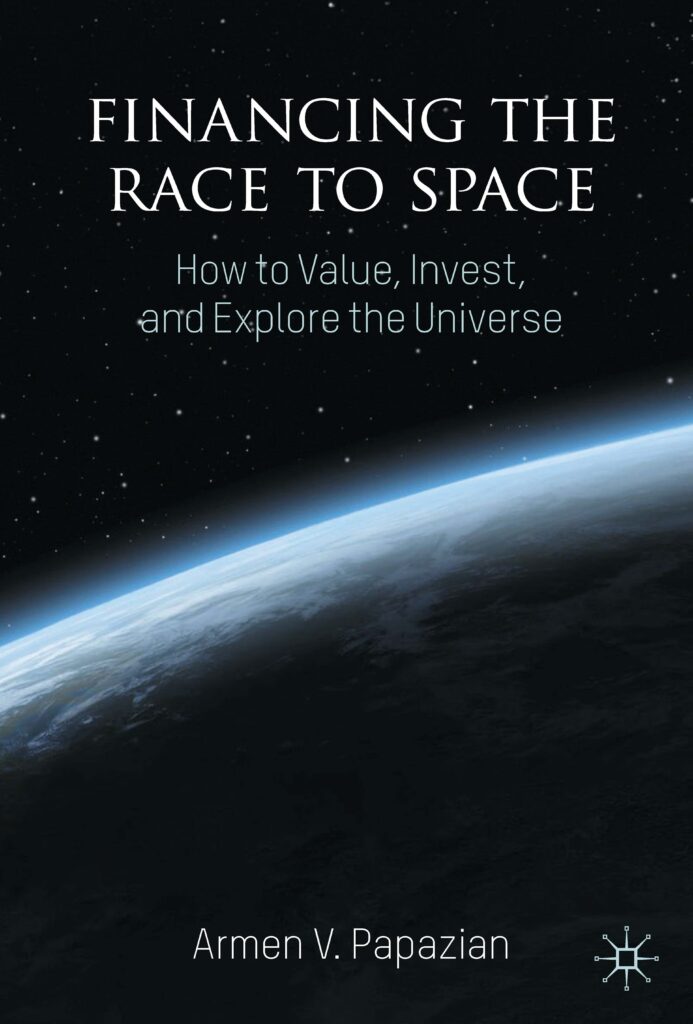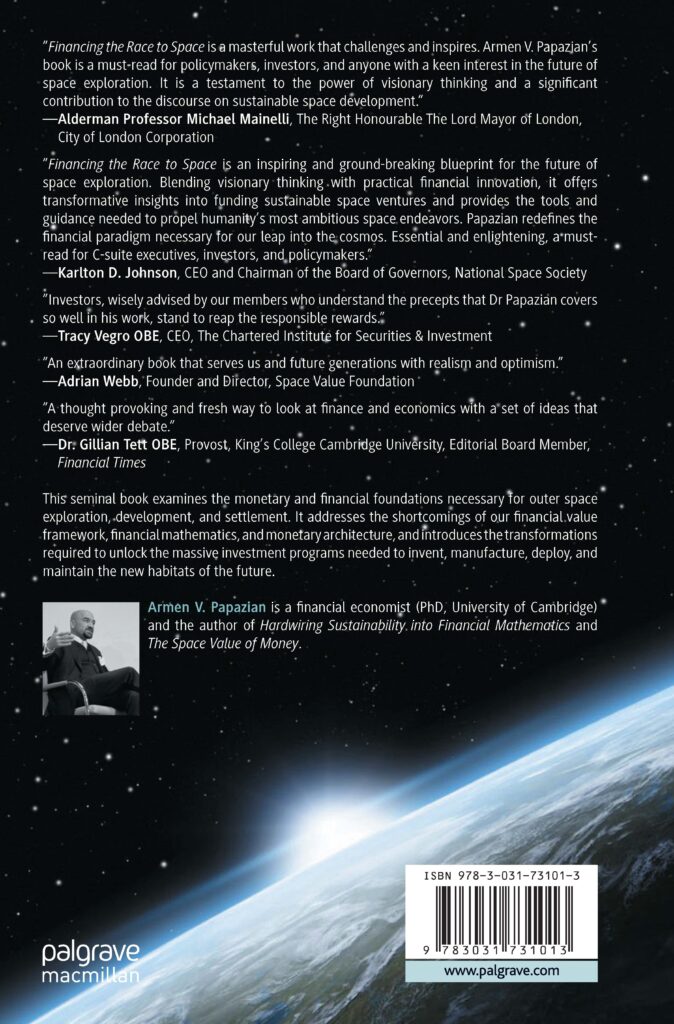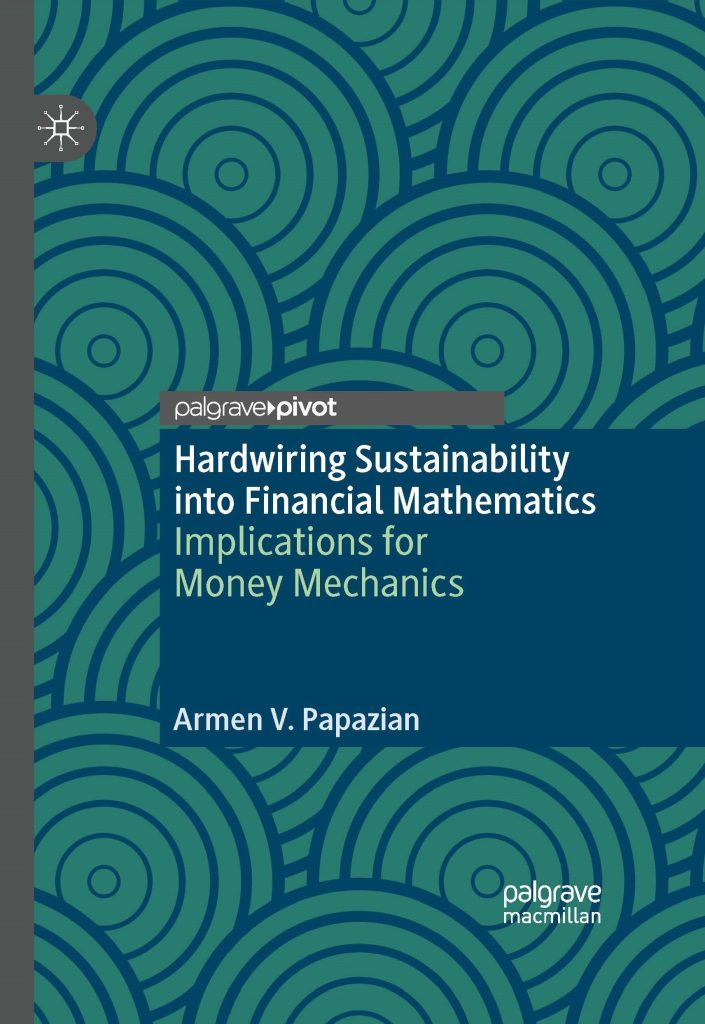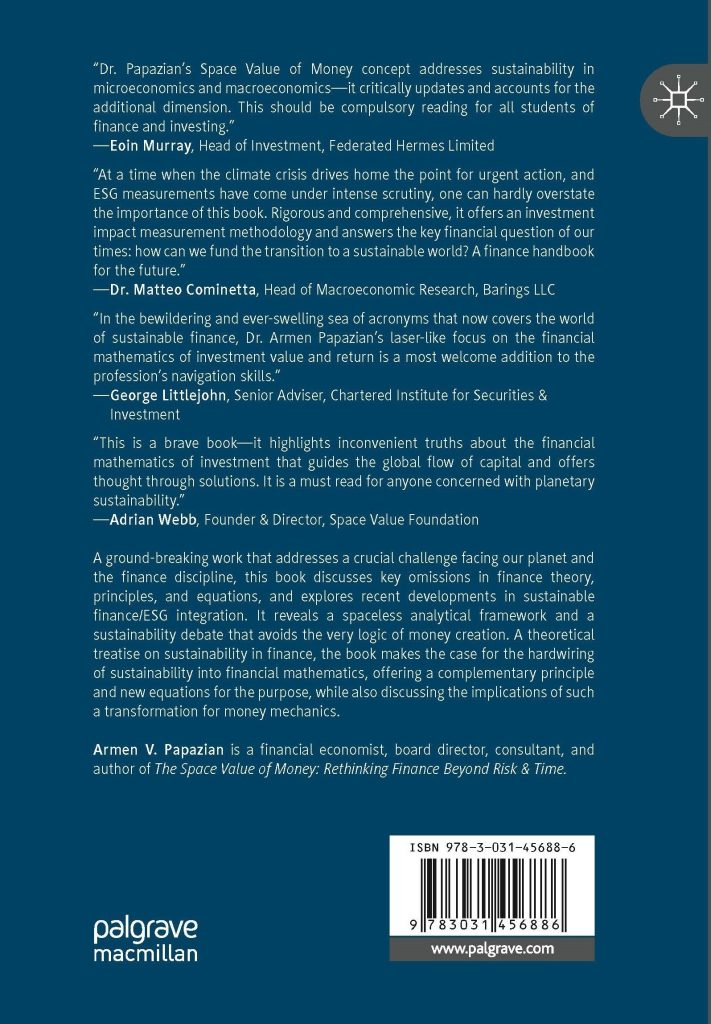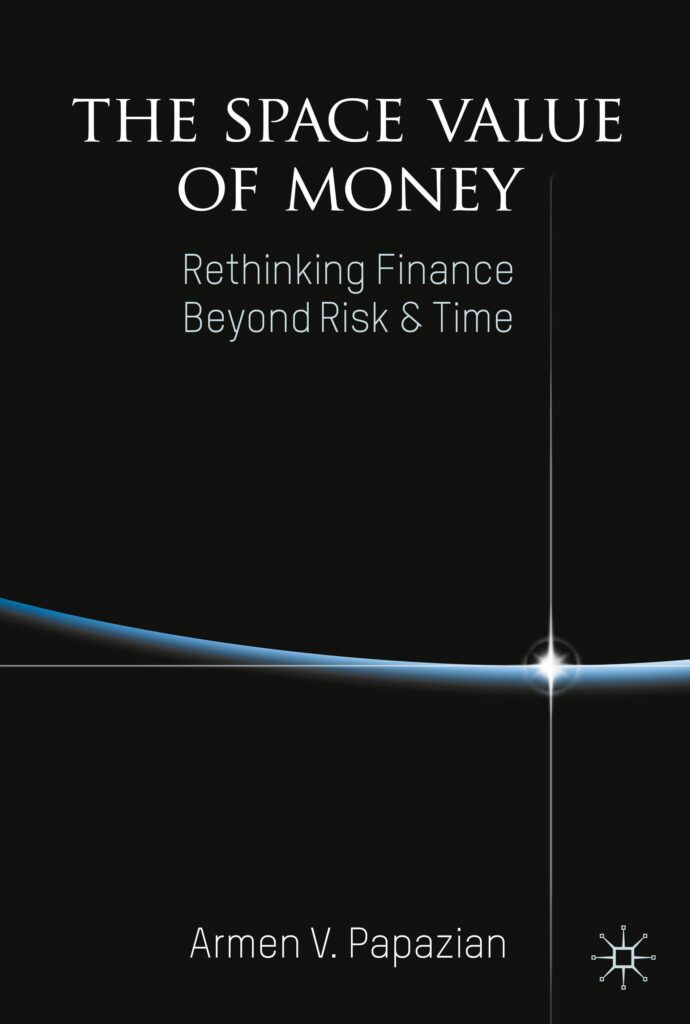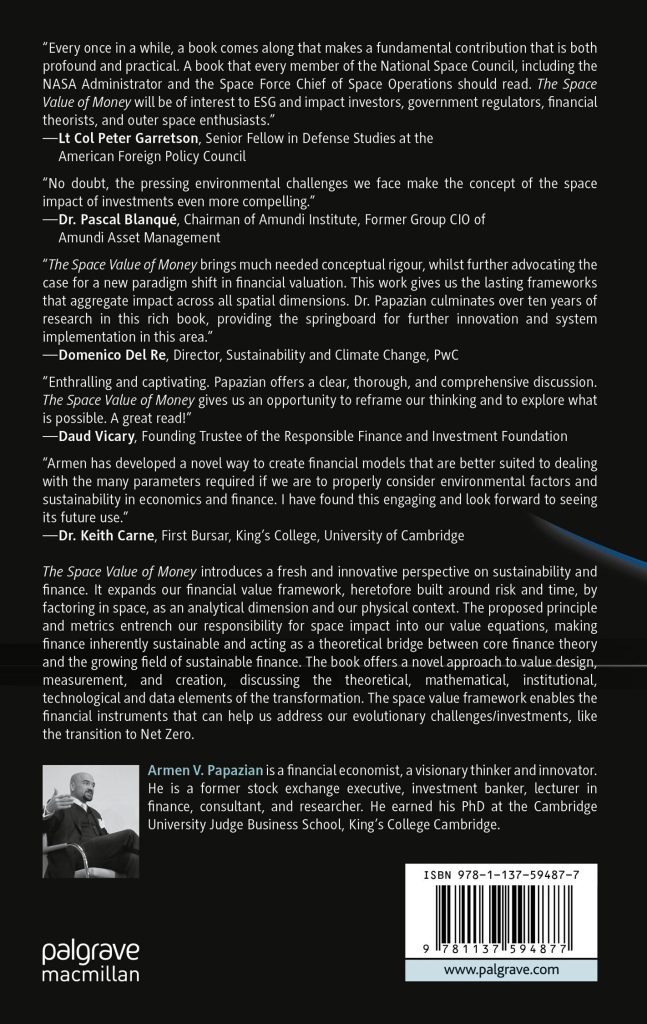“Adopting a space-adjusted financial value framework and mathematics can transform the monetary policy instruments we use for money creation. They can help us expand our toolkit and introduce the monetisation of space (PCN) alongside the monetisation of risk and time (debt) into our architecture. This, in turn, can help us transform the US debt ceiling into a wealth floor, and fund our most ambitious projects in outer space.”
Financing the Race to Space, 2024
This post highlights some of the arguments I make in chapter fifteen, ‘US DEBT CEILING TO WEALTH FLOOR’, of my latest book, Financing the Race to Space. You can learn more through the books as well as the many different tabs on this site. The main image used above was generated by the author using Chat GPT Image Generator, DALL.E. You can also read this post on Substack.
Other Posts
The purpose of this post is to argue that the United States faces a unique and historic opportunity to initiate a massive investment program in outer space. To achieve such a feat, it must first transcend its monetary architecture. The key to such a transformation rests in a theoretical reinvention of monetary and financial economics. This is necessary in order to introduce 'the monetisation of space' and reconfigure its debt ceiling into a wealth floor.
The election of President Donald J. Trump in November 2024 signals the start of a new and disruptive period of change in the United States, and the world — and I mean this in the most positive way possible. Whatever our personal opinions, this is true not just because it was a democratic election that reflected the will of the American people, but also, because change, however judged or misjudged, is and was what we needed. At the very least, a more profound discussion and transformation are now inevitable.
Moreover, I find the concerns and panic about the climate and the environment to be completely unfounded and misguided. This is so because none of our current standards and frameworks of sustainability actually secure and ensure planetary sustainability (see my previous post Our Sustainability in Space for our current progress). In other words, a different president would have not led to a different trajectory. Indeed, if anything, it would have entrenched a change resistant sustainability industry and ineffective frameworks.
As past, recent, and current COPs reveal, our efforts seem to be dynamically and actively focused on doing a lot, without really doing enough. They seem to be passionately focused on expressing the rhetorical and narrative need for adjustments and change, without actually changing course. While I do not downplay the role of our sustainability on Earth, I believe our current frameworks and standards are ineffective, they add costs and burdens on industry, without addressing the deeper issues and the core reasons behind our current predicament. I discuss these in The Space Value of Money and Hardwiring Sustainability into Financial Mathematics, and so I will not cover them here.
The unique opportunity in the US at the moment is to initiate and trigger the kind of changes that will allow humanity to make giant leaps beyond our atmosphere — a program that can mobilise massive investments into the sector and help us expand our reach into outer space. Given the role that Elon Musk has played in this election, and given the role he will surely be playing in the new administration, it is safe to assume that outer space will be a major strategic and tactical priority.
US outer space investments have been growing, but they are far from being what they can be, and far from the amounts we need to invent, build, deploy, and maintain the new habitats of the future. Even if relatively more significant than others', in dollar terms, US outer space investments can and must be much larger if we are to become a multi-habitat species.
The below charts denote the NASA budget and the Space Force budget, revealing the budgetary limitations and the recent cuts. In 2024, describing recent budget cuts in an article titled ‘NASA’s budget woes put ambitious space research at risk,’ Mann (2024) writes:
“Dreams of exploring the cosmos have crashed up against the harsh reality of budget cuts in the United States. Congressional approval of the 2024 federal budget earlier this year left NASA with roughly half a billion dollars less than the agency had in 2023 — and Mars science has taken the biggest hit” (Mann, 2024).
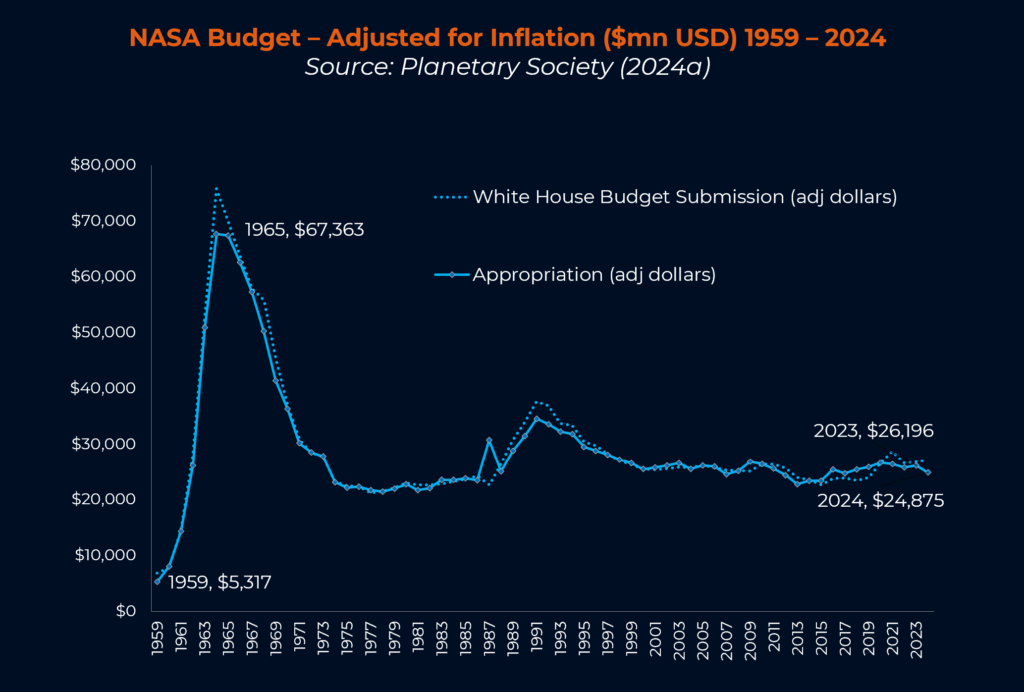
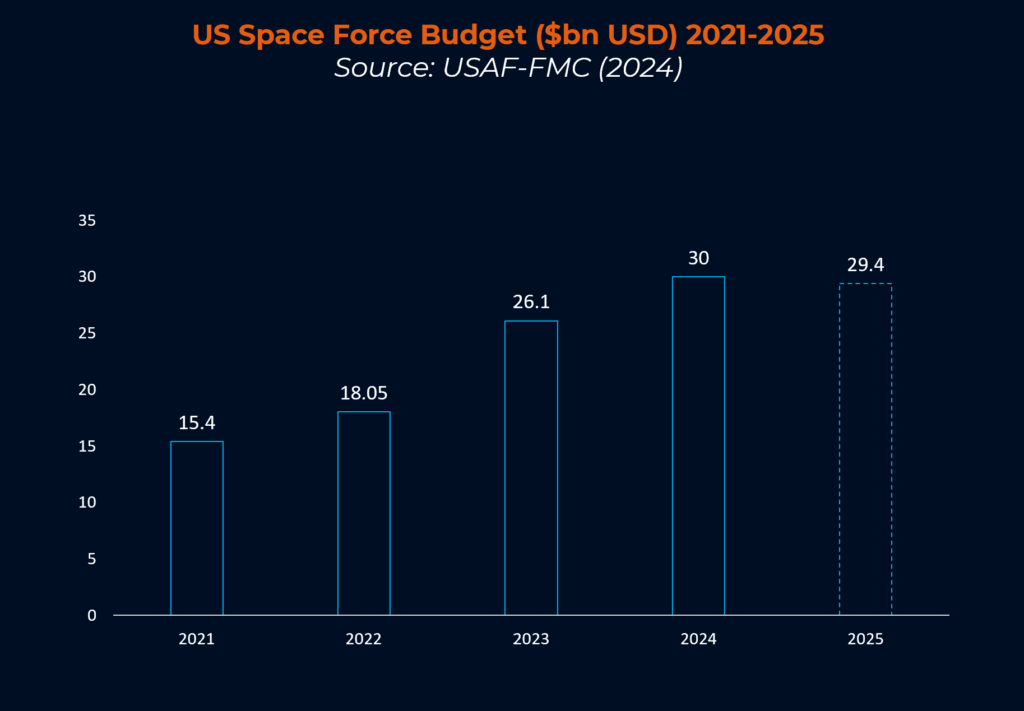
The below charts denote the number of orbital launches by country, and the number of spacecraft launched by each provider, in Q2 2023 and Q1 2024. While outer space access is growing, we are still at the very beginning of this new age.
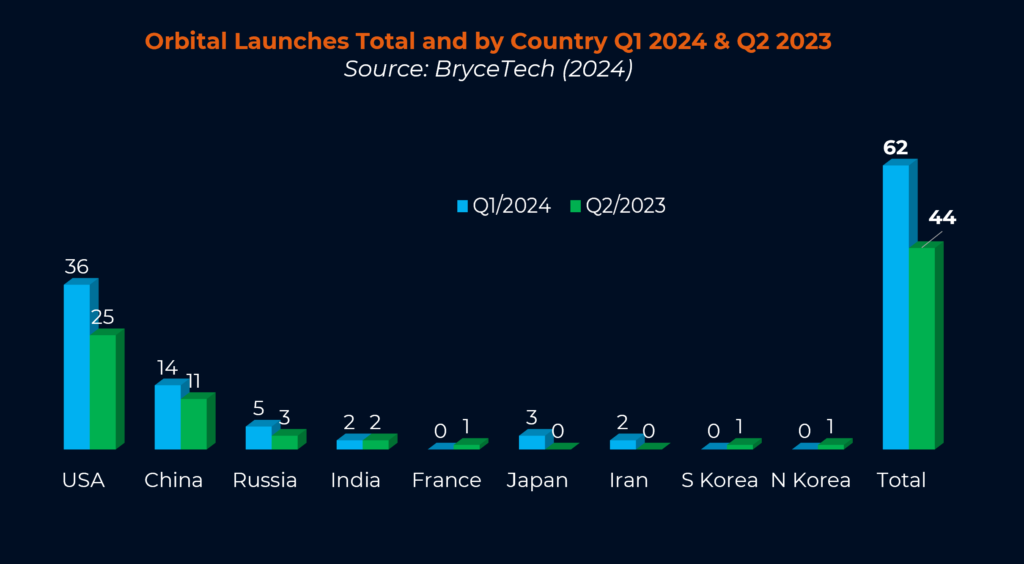
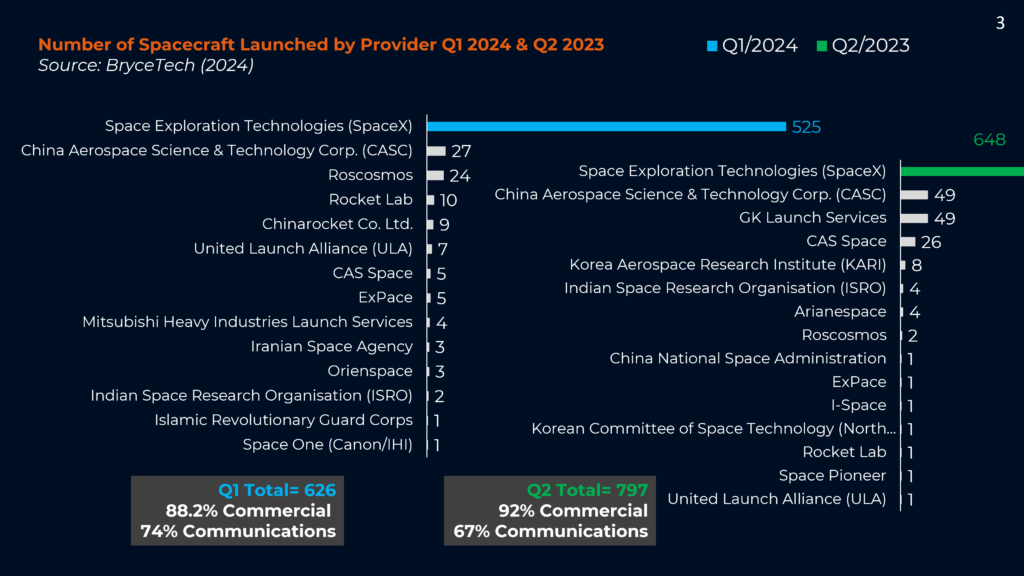
The below charts denote the overall size of the global outer space economy, as measured and projected by the World Economic Forum and McKinsey (2024), and its relative size compared to world GDP and global wealth in 2023 (Papazian, 2024).
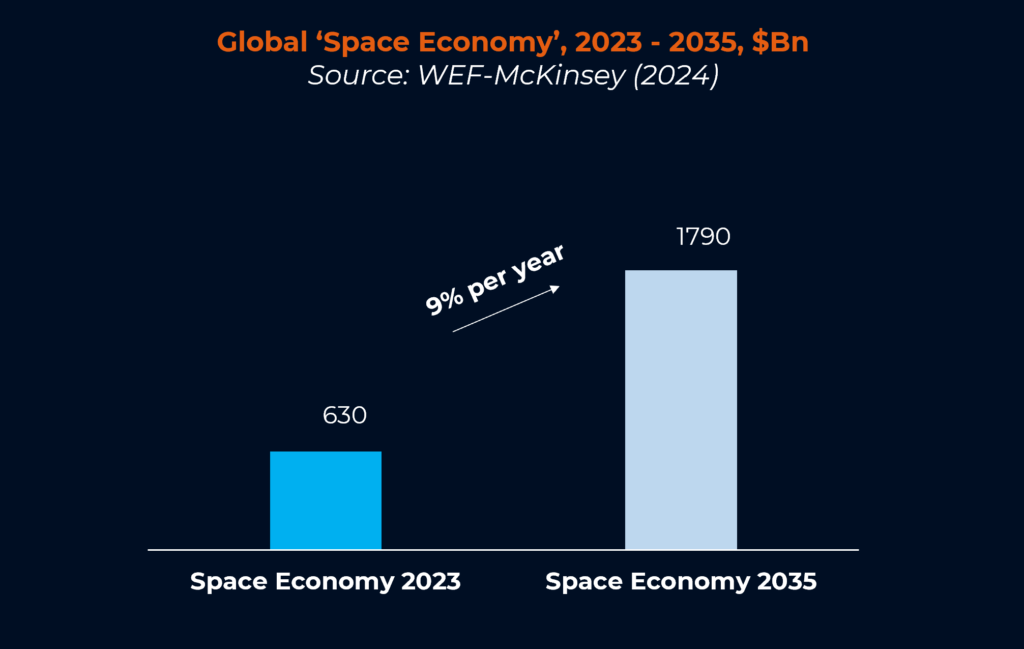
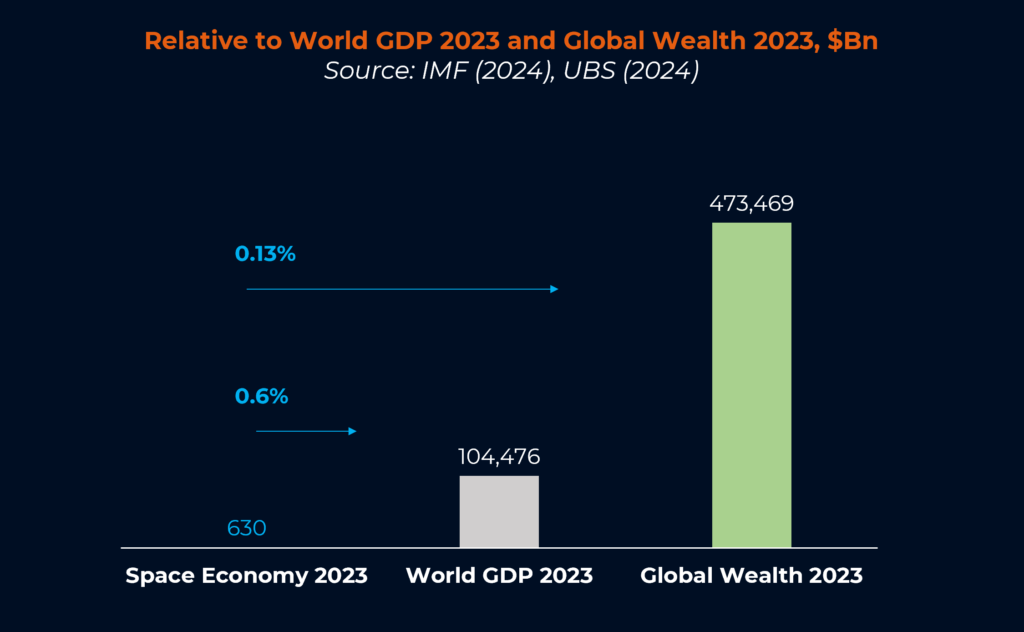
As I argue in the Financing the Race to Space, the main constraints on our ability to invest and expand in outer space have to do with our monetary architecture, financial value framework, and mathematics. They are spaceless, are built entirely around risk and time, and they impose limitations on the private and public parts of the outer space sector.
In my previous post, Money, Time, and Space Exploration, I discussed the debt-based nature of money, and how the US Federal Reserve and commercial banks create money through debt instruments and transactions. You can read the post for further background. The discussion focuses on the restrictions and limitations imposed through the use of debt and calendar time. There are, of course, a number of other issues and challenges that I discuss and address in the book.
When we create money through debt instruments and transactions, we are monetising risk and time. Given that space is missing from our financial value framework and monetary architecture, space is not actively monetised. Indeed, I argue that the monetisation of space is a required and necessary condition to unleash our spatial potential.
As a direct consequence of our current architecture, the US national debt (the US treasury uses the terms national, federal, and public debt interchangeably) has been growing continuously. As of the 6th of November 2024, total outstanding public debt has reached:
$35,912,058,541,218.85
Unlike what many think and have argued, the main challenge here is not the high number, but the purely debt-based money creation and public expenditure architecture that it reveals. We have built an architecture that monetises risk and time (debt), omits space, and ignores our impact on space.
This is a fundamental challenge that the new US administration will have to address, if it were to plan and conceive of a massive investment program in outer space. The plausibility and realisability of such an investment program is dependent on a theoretical breakthrough that can deal with the current national debt levels, and can transform the debt limit/ceiling into a wealth floor. Otherwise, our investment levels in outer space cannot transcend the current bottlenecks.
The debt limit or ceiling has been a central institutional bottleneck in the US. “Congress has always restricted federal debt. The Second Liberty Bond Act of 1917 included an aggregate limit on federal debt as well as limits on specific debt issues. Through the 1920s and 1930s, Congress altered the form of those restrictions to give the U.S. Treasury more flexibility in debt management and to allow modernization of federal financing. In 1939, a general limit [ceiling] was placed on federal debt…. Federal debt accumulates when the government sells debt to the public to finance budget deficits and to meet federal obligations or when it issues debt to government accounts, such as the Social Security, Medicare, and Transportation trust funds” (Austin, 2015, 1).
Indeed, as I argue in Financing the Race to Space, we must reinvent monetary and financial economics in order to unlock the resources needed for an investment program that addresses the actual needs of our expansion in outer space
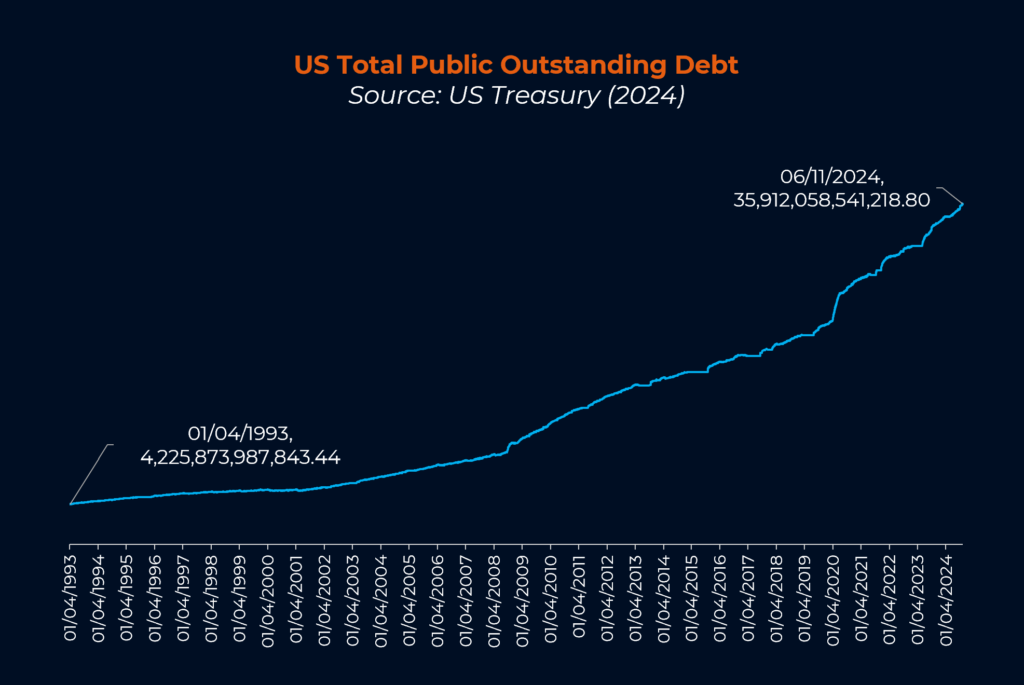
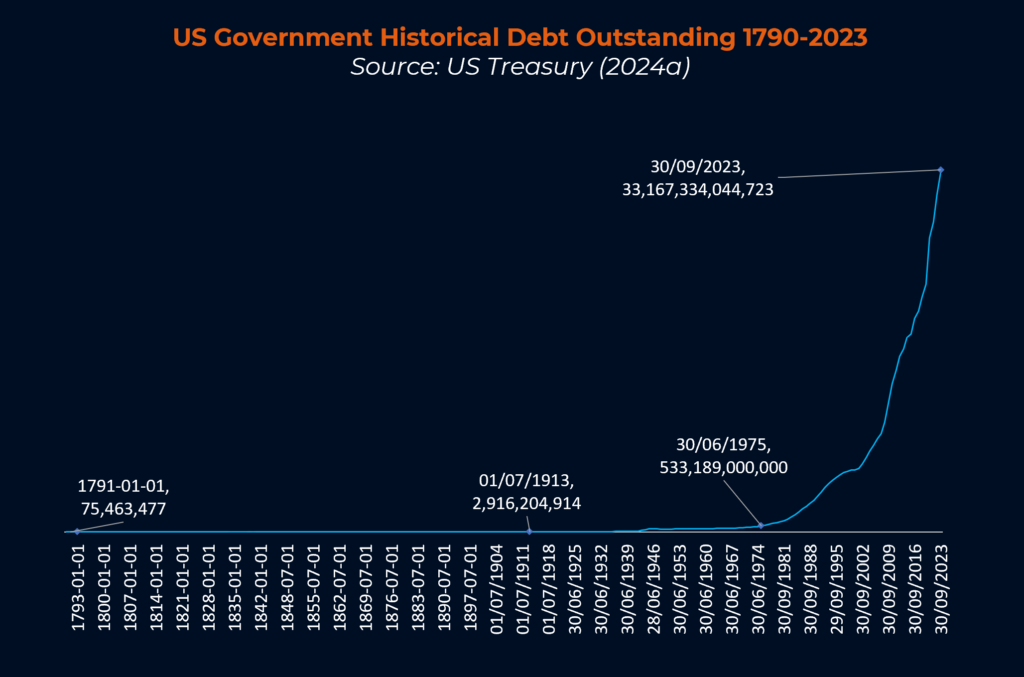
As long as public expenditures are funded through debts (and partly by taxes), and money creation is entirely built on debt, the national debt will increase and we will remain at the mercy of the debt limit/ceiling.
The monetisation of space, which depends on key transformations in our financial value framework, mathematics, and monetary architecture, allows the introduction of new instruments that create money without debt, instruments that can finance economy wide projects like outer space development and expansion. Short of such changes, our ambitions to explore the universe and become a multi-habitat species may remain unrealisable.
Indeed, as Elon Musk says it himself, we will be dependent on the revenues of an ISP (Internet Service Provider): “By the way, our commercial Starlink program is the primary source of funding for Starship (NASA is helping too). So thanks for buying Starlink and supporting humanity’s future in space. If you look closely at your Starlink router, you will notice that it has an illustration of the Earth-Mars transfer orbit” (Musk, 2024).
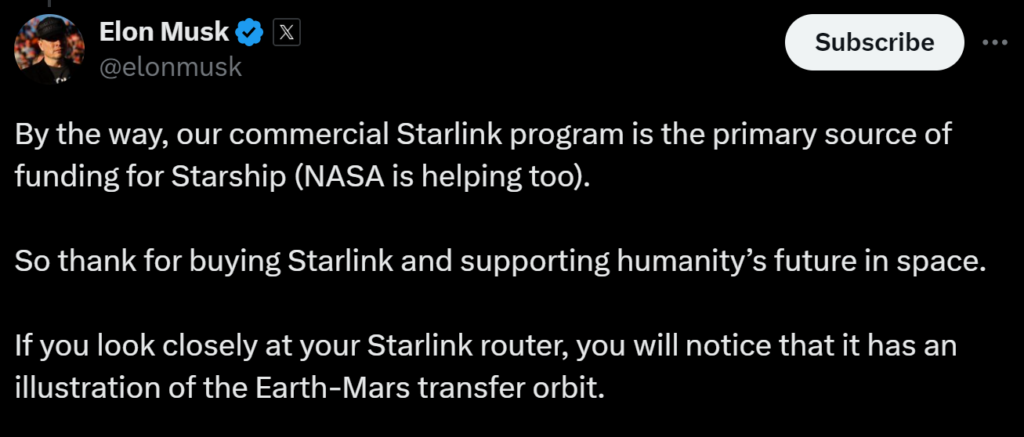
As much as one may admire the many achievements of SpaceX, surely, the future of humanity in outer space cannot depend solely on the purchase of internet communications and the revenues of an Internet Service Provider.
We must reinvent monetary and financial economics by introducing the analytical dimension of space, our physical context, and we must introduce new money creation tools that are non-debt, no maturity, high space value creating instruments (PCNs) to be able to finance the massive programs we need to invent, build, deploy and maintain the new habitats of the future.
In Financing the Race to Space (and other posts and pages on this site) I have argued and introduced such an instrument. I have called them Public Capitalisation Notes (PCNs). I give you below the example design of a NASA PCN that can be used to inject the many billions we need to truly conquer outer space beyond Low Earth Orbit (LEO), Medium Earth Orbit (MEO), and Geostationary Orbit (GEO).

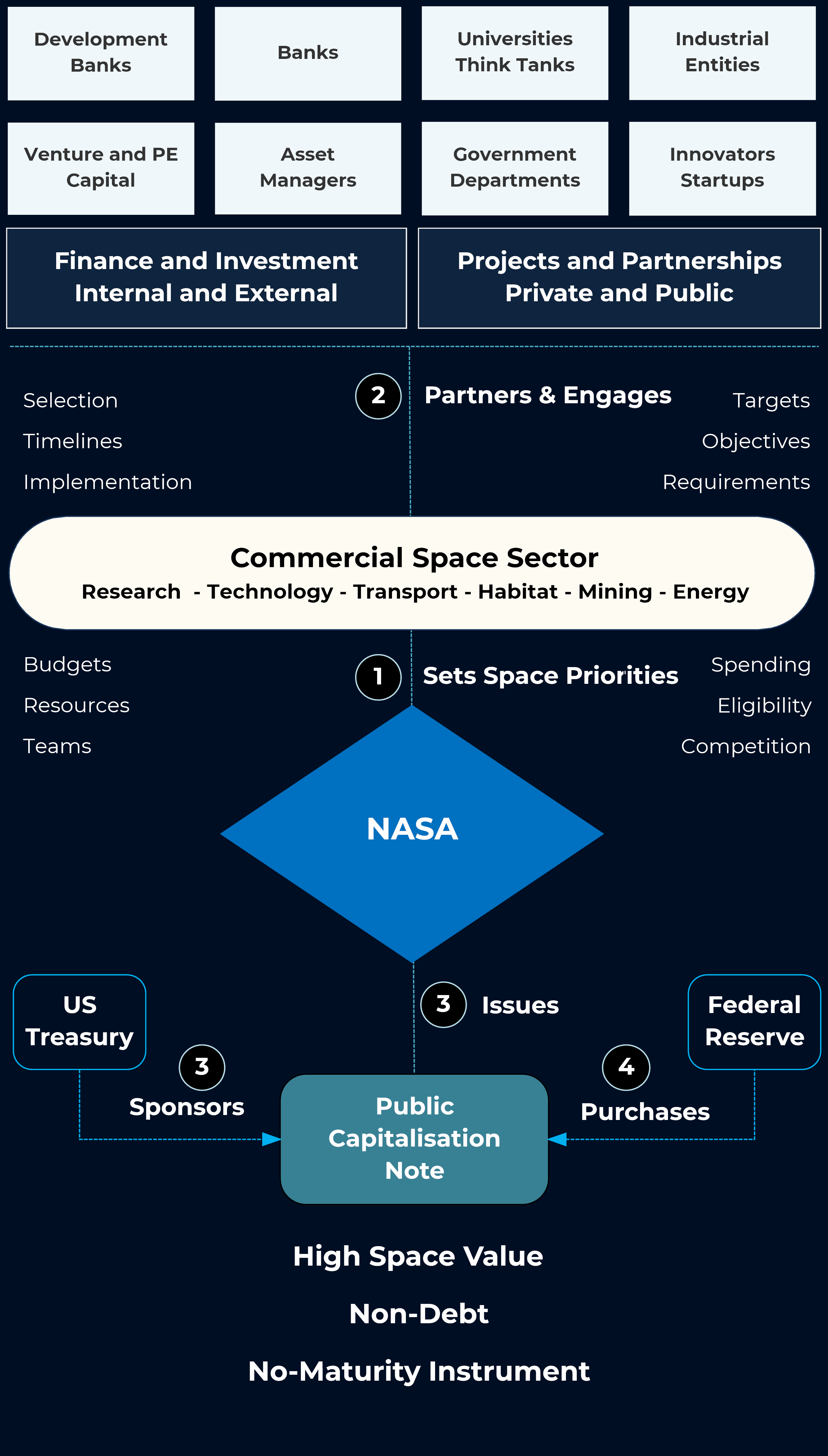
The introduction of PCNs can happen only after we have reinvented and improved our financial and monetary framework. Moreover, once introduced, PCNs can help us gradually transform the US debt ceiling into a wealth floor. Given the fact that they are non-debt, no maturity, and high space value instruments, PCNs introduce the monetisation of space into our current architecture.
A NASA PCN can provide the structural and institutional framework through which a massive investment program can be conceived and implemented.




